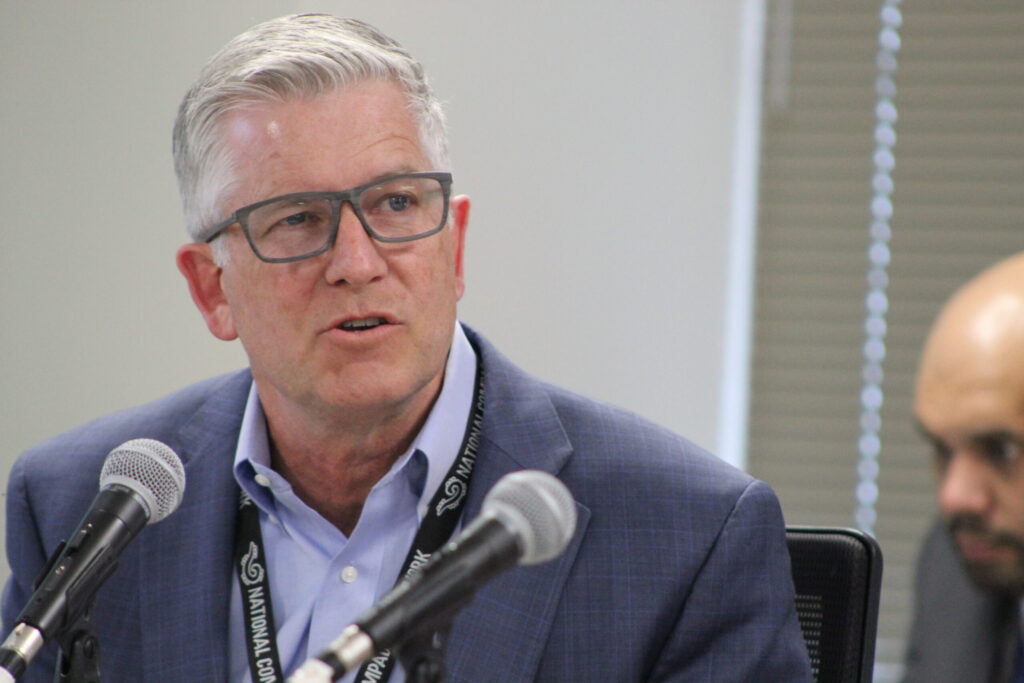What’s more threatening to public lands — cows or cartel drug ops? | GABEL

Rachel Gabel
I’ve written a fair amount about public lands in the U.S. I don’t live in the part of Colorado where most of the 8.3 million acres of Bureau of Land Management-run public lands exist but as an ag writer, I’m keenly aware of their importance to multiple users.
In recent months, I’ve written extensively about the updates to the Rock Springs Resource Management Plan proposed by the BLM for the 3.6 million acres in southwestern Wyoming. The document dictates guidance, objectives, policies and management actions for the specific area. Wyoming Gov. Mark Gordon has been locking horns with the BLM for months after they threw out his recommendations, public input and common sense to propose what Gordon has called an agenda-driven document pushed by the outgoing Biden administration to make a political point before leaving office.
I’ve written about the removal of feral cattle in New Mexico’s Gila National Forest, done by U.S. Department of Agriculture APHIS sharp shooters against the wishes of the state’s largest cattlemen’s organization and the state’s livestock board.
Stay up to speed: Sign up for daily opinion in your inbox Monday-Friday
I’ve written much more than I care to admit about wolves as they relate to public lands, most recently about U.S. Rep. Lauren Boebert’s letter to Department of the Interior Secretary Deb Haaland asking her to pause further wolf releases until an update can be done to the RMPs in the areas that do not account for the presence of gray wolves. Boebert indicated releasing wolves on state lands to evade federal management or the required process to update RMPs and meet NEPA requirements is, essentially, a dirty trick by the Polis administration.
Much ink has been spilled as of late about boundary disputes, most infamously between the USFS and Charles and Heather Maude, young ranchers in Caputa, South Dakota, who are facing separately filed criminal charges based on a fence line placed 50 years ago.
Another topic that has dominated headlines recently is attempts to recognize conservation as a multiple use on public lands, essentially sealing off acres from all uses. Paired with wild misuses by the Biden administration of the monument designation, the debate over conservation and preservation is often top of mind.
Then I stumbled across Keely Covello’s reporting. Covello grew up in northern California, the daughter of a ranch veterinarian. She was working and living in Orange County when she heard about the murder of Mendocino County rancher Dick Drewery. She has written about his murder and in doing so, has shed light on the estimated 6,000 cartel-run illegal marijuana grows that exist on public lands across the working western U.S.
I had no idea.
Drewery was one of the ranchers in the area who, in his 85 years, saw what Covello calls back-to-the-landers or hippies come into the area, followed by outlaw growers who were quick to recognize the economic opportunities of black market pot, making the area known as the “Emerald Triangle” of Humboldt, Mendocino and Trinity Counties. He was shot execution style in 2021 and found in his still-running vehicle with a single gunshot to the head with his driver’s side window rolled down. His death remains unsolved, but rumors abound.
Covello said it is commonplace for public lands users — be it cattle producers or recreation users — to stumble upon illegal grows on public lands, some abandoned and some being protected by men with weapons and worked by people who have been trafficked.
Water for the grow sites is diverted illegally, and the irresponsible use and disposal of herbicides and pesticides is blamed for run-off pollution. According to John Nores, illegal grows supply a $49 billion black market. After all, the price of land and labor they appear to be paying is hard to beat.
John Nores contributed to Covello’s documentary “Murder in the High Country” and is able to do so after a 30-some-year career that began as a warden for the California Department of Fish and Wildlife and concluded as part of the Marijuana Enforcement Team (MET), an elite tactical unit formed to combat criminals who he said are responsible for the worst environmental crimes in the nation.
According to Colorado historian Nick Johnson, illegal cultivation on public lands dating back to the 1980s has resulted in millions of pounds of dumped plastics and trash, siphoned water diverted from streams, illegal dumping of fertilizers and pesticides, clear cutting of trees and the obvious threat to visitors and authorities associated with crime. These grows, Johnson said, sprung up after marijuana was legalized in eight states between 1996 and 2000, with seven of those states located in the western United States and boasting many acres of public lands. As far back as 2009, $2.5 million worth of marijuana was seized from a sophisticated growing operation in the Pike National Forest in Colorado.
It seems if we’re ranking the threats to public lands, cartel-funded illegal drug operations staffed with trafficked individuals and guarded by cartel members with large guns would certainly rank higher than cows. A bit of perspective for you.
Rachel Gabel writes about agriculture and rural issues. She is assistant editor of The Fence Post Magazine, the region’s preeminent agriculture publication. Gabel is a daughter of the state’s oil and gas industry and a member of one of the state’s 12,000 cattle-raising families, and she has authored children’s books used in hundreds of classrooms to teach students about agriculture.










